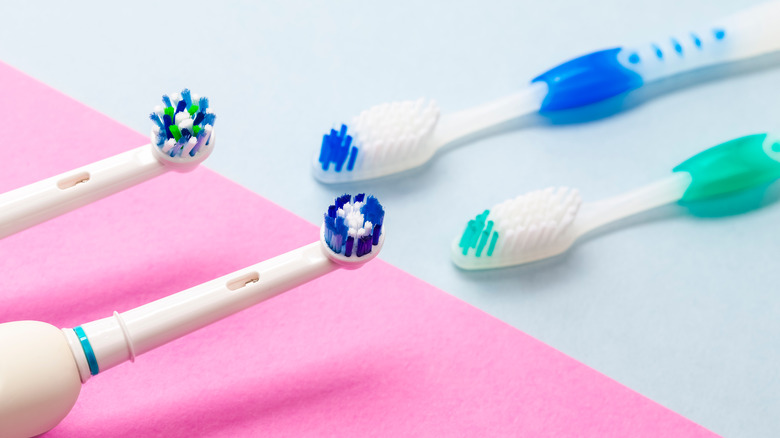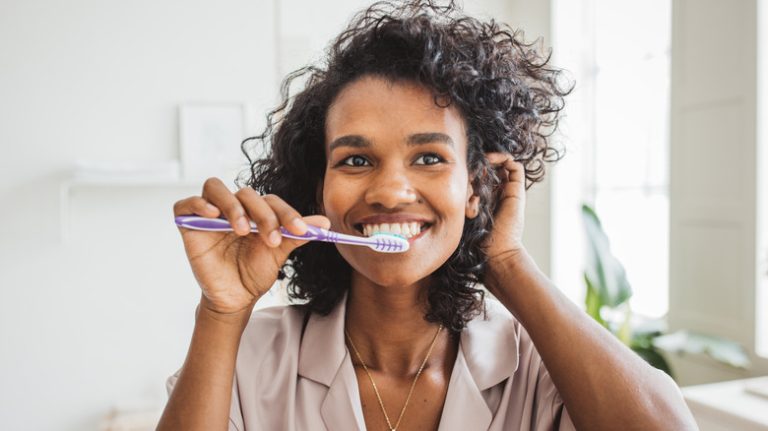The formal recommendation by the American Dental Association (ADA) is for individuals to use a soft-bristle toothbrush to brush their teeth for two minutes, two times each day for optimal oral health. While some people may prefer the old-school manual toothbrush, others are avid fans of an electric toothbrush. However, it seems that manual toothbrushes still reign supreme among consumers. As per a 2024 report issued by Mintel, 58% of adults reported using a manual toothbrush within the last six months, while only 41% of respondents said they’ve used an electric toothbrush within the last half-year (via Consumer Reports).
However, there are a lot of benefits to be gained from using an electric toothbrush. Researchers from a 2024 study published in the Journal of Clinical Periodontology followed more than 2,800 participants over the course of 11 years who used either a manual toothbrush or an electric toothbrush. In the long term, use of an electric toothbrush was associated with lower rates of periodontal disease, gum recession, and greater numbers of teeth that remained intact. Electric toothbrushes are also said to be more beneficial and easier to use amongst older adults, kids, people with braces, and those with certain skin conditions, reports Insider.
Electric toothbrush heads need to be changed more often

“Health experts have been speaking about the benefits of electric toothbrushes for many years,” says Dr. Nigel Carter, chief executive of the Oral Health Foundation (per the Oral Health Foundation). “Electric toothbrushes, especially those with heads that rotate in both directions, or ‘oscillating’ heads, are really effective at removing plaque. This helps keep tooth decay and gum disease at bay.”
For those considering making the switch from team manual to team electric, it’s important to remember that just like a manual toothbrush needs swapping out every now and again, so does an electric toothbrush head. Experts at White Oak Dental explain that we should reach for a new manual toothbrush roughly every three to four months. However, an electric toothbrush head will need to be changed more frequently — specifically, every 12 weeks or sooner. The reason is that a powered toothbrush has shorter bristles than our tried-and-true manual ones. Therefore, they’re likely to break down sooner than the bristles of a manual toothbrush.
No matter how long it’s been, be sure to swap out your electric toothbrush head for a new one once it starts looking rough. Experts explain that once the bristles begin to splay, it diminishes the toothbrush’s ability to scrub away plaque, leaving us more susceptible to oral health problems.


